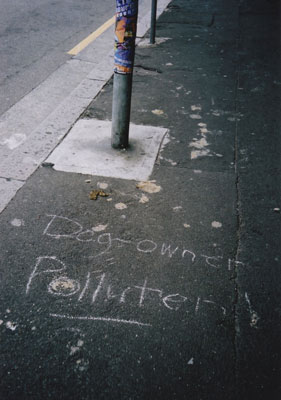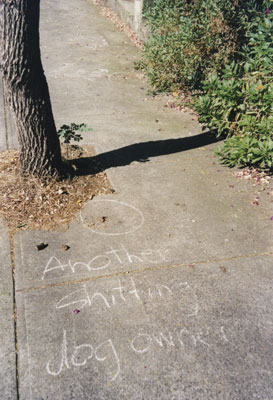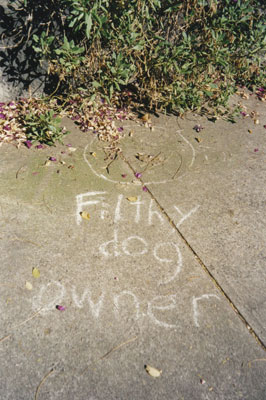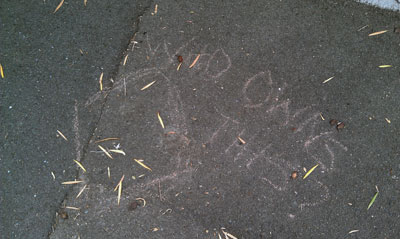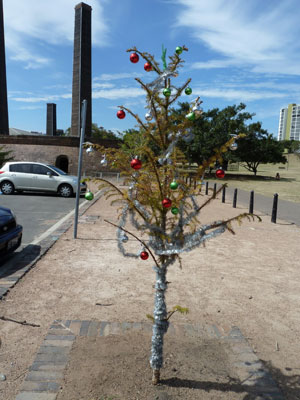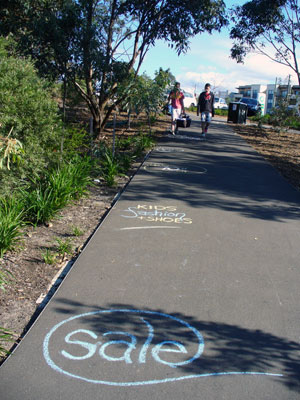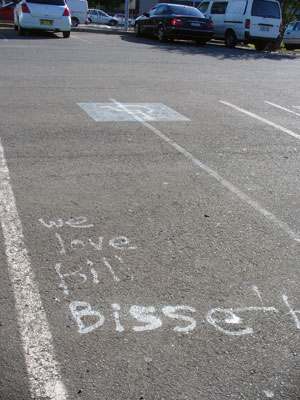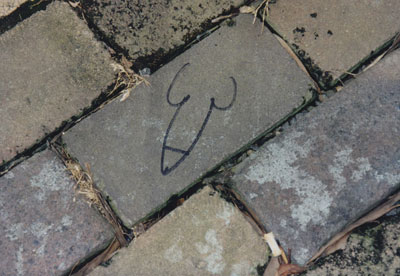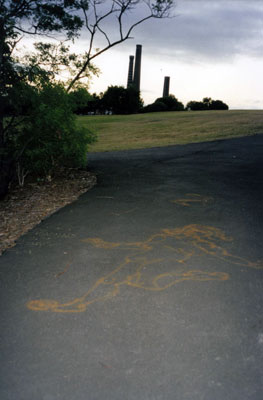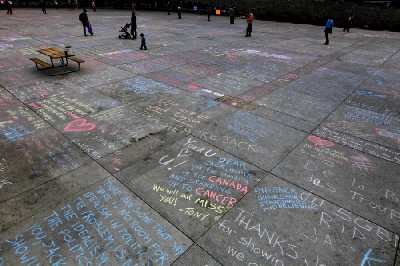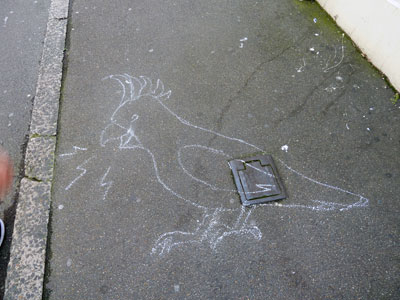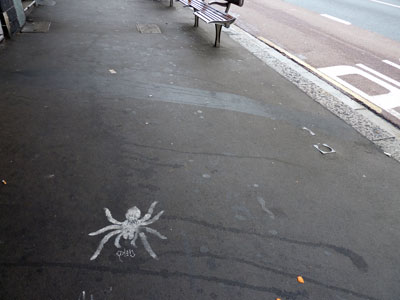
A pavement artist in Sydney, probably 1940s. (Photograph by S.W. Windrim, reproduced courtesy of the State Library of New South Wales, Call no.BCP 01193)
Most people are familiar with pavement artists. Beggars and buskers have been known to chalk pictures on the ground for money since at least the early 1800s. The history of pavement art is being documented at All my own work! , a site that has been researched by Philip Battle, himself a present-day pavement communicator.
But over the decades chalk has been used not only for earning money, but also for protest.
I have been using Trove to trawl through old Australian newspapers for references to pavement chalking. Although I have found earlier examples, pavement writing seems to have become more prevalent by the mid-20th century during the Great Depression. In July 1931 the Sydney Morning Herald reported that,
‘It would appear that in spite of the depression the chalk vendor is doing quite a brisk business. All over the suburbs there are notices chalked on the footpath about evictions, public meetings, rallies, and speeches’.
It wasn’t only happening in the suburbs. In August 1931 both the Sydney Morning Herald and the Barrier Miner reported that a procession of unemployed men had taken possession of the Town Hall in the mining town of Broken Hill (New South Wales). From the balcony of the Town Hall their leaders made speeches condemning Council alderman and the Town Clerk over the gaoling of a local man for chalking propaganda on a footpath.
The history of pavement writing, if traced through newspapers, is a history of crimes and misdemeanours since most mentions are reports in the ‘Court appearances’ columns.
In another one of the many examples I found, The Argus in Melbourne recorded a notable case in November 1934, where legal minds argued over whether ‘chalk-writing on a footpath’ (in this case a notice for a Communist meeting) could be described as ‘a thing’ within the terms of a by-law that made it an offence to place any ‘placard, board, or any other thing’ on any footway in the form of an advertisement. Although one magistrate accepted the defence lawyer’s argument that ‘chalk-writing could not be described as a tangible “thingâ€â€™, three other justices on the bench disagreed and the offender was fined £3 with costs.
In my search of old newspapers I have occasionally come across reports of footpath advertisements and other kinds of chalk writing, but political notices are mentioned much more frequently. This may well have been because police generally only bothered to arrest pavement writers if their messages were anti-government.
Convictions for chalk protests continue to the present day, and I will talk about that in a later blog post.
I have recently started a Facebook page, Pavement Appreciation. I invite you to visit.
